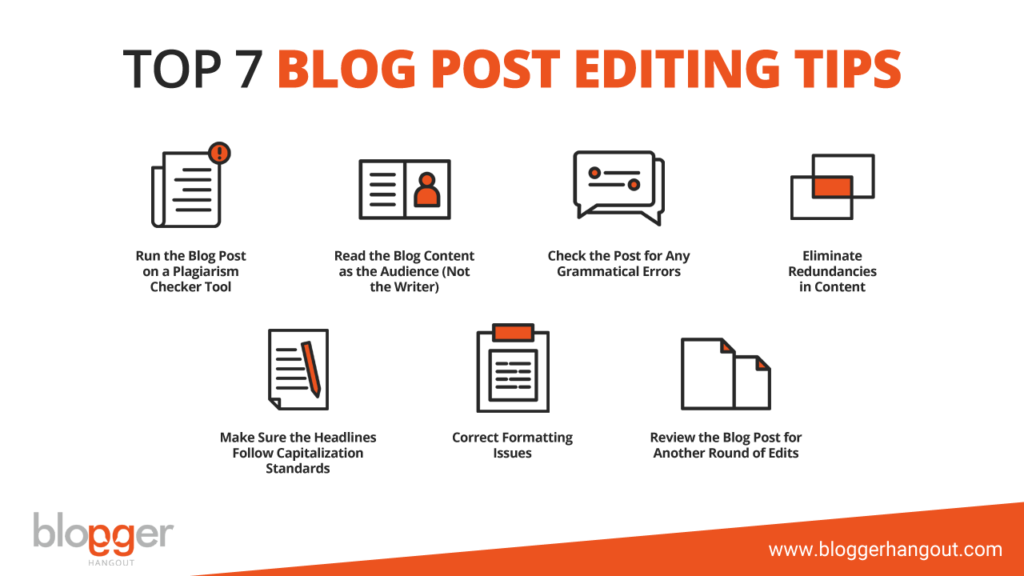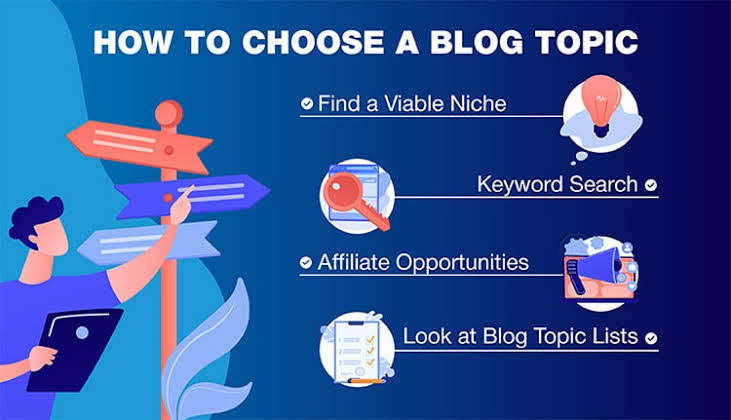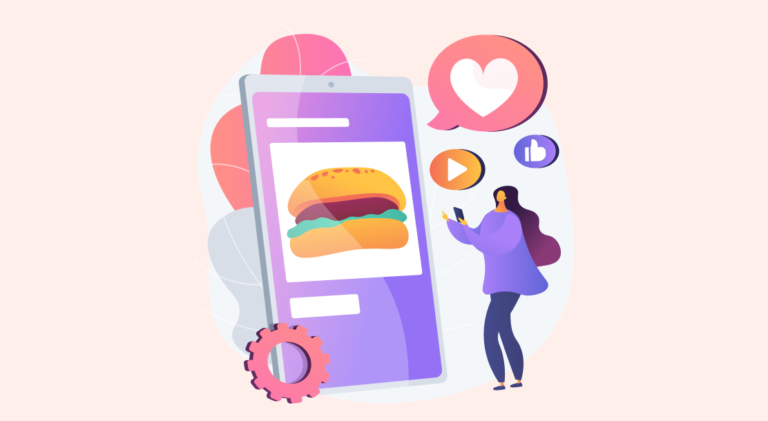
Table of Contents
- 7 Tips on How to Edit Blogs
- Key Takeaways
- Conclusion
- FAQs
While most online users don’t expect 100 percent accuracy in grammar and spelling, they want to see that you have put in the effort. No matter how small or big, every mistake can increase the chances of your reader thinking you haven’t worked hard enough to deserve their attention. And that is why publishing only well-edited blog posts is imperative.
And for this, self-editing is a skill that you should care to master. While you may eventually hire an editor to help with your blog, this is a costly option to consider when you have just started. But then, whether you are a beginner or an expert blogger, publishing high-quality, polished articles is not an option but a necessity for you. Poorly edited posts can make your blog look highly unprofessional.
Self-editing is a cost-effective way to ensure content quality. Keep trying, keep giving your all, even if you do not see significant conversions through your blog. A successful blog doesn’t happen overnight. It takes time. Take the first step, at least— learn how to edit blogs.

7 Tips on How to Edit Blogs
1. Attractive topics

Your blog should be about subjects that you are passionate about. Content created by passionate writers is often more engaging than bland articles churned out for traffic.
You don’t have to write about everything you feel a sense of passion for. Write on topics that are consistent with the focus of your blog. Having a niche is the key to having a great blog. Make sure your content is specific and is based on a subject that has been proven to drive results. Once you complete your post and publish it, it’s time to check how well it’s performing. And for that, you can take the help of tools such as Google Trends.
2. Catchy headline

Talking about blogging tips and tricks, how can we forget to discuss the importance of a headline? Well, your article’s title or headline is what readers see first. Strong titles communicate that the article has the information readers want, and they make the write-up stand out from other similar content available online or in print.
Good headlines are essential for your blog, social media posts, and other marketing materials. People searching the web for useful resources will look for titles that truly catch their attention. As the content on the Internet continues to increase, your title is your hook to attract a greater volume of readers.
3. Scannable formatting

Your headline and topic are what make people want to read your article. However, the text format determines whether they stick around or go away. So, follow a suitable blog format, and divide your content into small chunks of text separated with bold subheads.
Small paragraphs and bold headings make content easily scannable. This is one of those expert-approved blog writing tips you need to include in your blogging playbook right away.
But the question is: How do you know if your content is scannable? To assess the scannability of your headings or subheadings, you can use a heat map tool like Crazy Egg. A heat map tool will show you where the focus of your content is and where it should be. Sometimes, all you need for improved heat map results is to change your blog’s format.
4. Guest posts by experts

If you are looking for blogging tips and tricks to increase traffic to your site, try inviting guest posts. You can improve the authority of your blog by inviting people to write posts for you. But then don’t offer a spot to any random writer. You should only seek out experts in your field to create content for you.
It is a great way to build your credibility, and the post can link back to your site. This is an excellent SEO boost for your writer as well as you.
Now, the question is: How to find qualified experts willing to write on your blog? This part is a little tricky, as you will have to search for experts in your field if you don’t already know them. Mention is a great tool that can help you in this regard.
5. Have a captivating featured Image

Want unique blog writing tips? Here is one: have pin-worthy featured images in your content.
After you have your content sorted, it is time to move on to the design. Why design? Because if content is the king then design is the queen. After all, you’ve spent so much time writing relevant posts and engaging contributors. Now, your posts must shine. Having a great visual to support your content is the best way to achieve this.
Your featured image is the first image your audience sees upon visiting your page. It’s also the one that is most shared on social networks. So, it should be spectacular. It should be “pin-worthy.” And you want an image that shouts, “Click Me!” You can make your own images if you are creative. But in case you are not, there are tools that you can use to create share-worthy featured images quickly.
6. Infographics

You have the option not to write a blog post and still have traffic on your site. Wondering how? By posting infographics instead of articles.
However, you need to make sure your infographics are in line with the visual theme of your blog. Infographics combine important data with visuals in a way that is easy to comprehend. They have everything that can boost engagement. Besides, they are fun to create, and people love them. Blogging tips like this one might sound too run-of-the-mill, but they work like magic.
Although infographics don’t require exceptional writing skills, you can hire a freelancer to create one for you, especially if you aren’t feeling creative enough or don’t have the time for it.
Infographics offer a refreshing deviation from traditional blogs and are totally share-worthy.
7. Number of posts

Once you have properly formatted your posts and adorned them with fancy graphics, you can expect to see some success. But don’t forget consistency; this is the final piece of the puzzle. Post more often to ensure consistency in your blog.
This may mean that you have to commit more time than you normally do. A post can take an average of 6 hours. This could take longer if you value quality and love to add fancy images or infographics to the content. You will also have to decide how frequently you will post. Although the frequency depends on your availability, more is usually better when it comes to blog posting. Also, don’t spend all your time learning how to edit a blog post; it would pay off to spare some time to learn how to be more productive at writing and creating more content per week.
Key Takeaways
- Mistakes in your content can increase the chances of your readers thinking you haven’t worked hard enough to deserve their attention.
- You must master the art of self-editing to improve the quality of your blog.
- Whether you are a beginner or an expert blogger, publishing high-quality, polished articles is not an option but a necessity for you.
- Some fantastic tips on blog editing include choosing interesting topics, creating catchy headlines, using a scannable blog format, and the like.
- While content is the king, content design is the queen.
Conclusion
Writers often need a little hand-holding on how to edit blogs. This article not just thoroughly explains how to edit a blog post but also offers invaluable tips on how to blog well. However, if we had to pick one tip from the entire list, it would be #7. Blogs that post informative articles more frequently perform better, even when their headlines and featured photos aren’t the most catchy.
Consistency is not an option; it’s a necessity in today’s fiercely competitive content marketing space. People are looking for value. So, first, focus on writing compelling, relatable, and easy-to-read posts. And it’s then that you should think about sprucing up the content by adding fun elements to it. Create a catchy headline for clickability, and see how it works. Create an infographic that people can share, and monitor the results. Do everything in your stride to make your blog stand out. Remember, success lies in not giving up. You don’t know what the future holds, so do your best work with the utmost honesty and diligence.
FAQs
If you want to know how to edit a blog post without external assistance, then here is a step-by-step process that you can follow.
– Simplify the content.
– Add supporting tables and charts wherever necessary.
– Proofread.
– Optimize the content for SEO.
– Preview the post.
– Publish it.
One of the best things about blog posts is that they can be edited after being published. While it is important to have a well-written and polished blog post, a typo won’t hurt your chances of success. Now, isn’t this one of those Blogging tips you would happily jot down in your notebook? Well, yes indeed! It’s great that blog editing is flexible and not as rigid as print editing.
If you are at the helm of your blog and are responsible for everything, from writing and publishing the blog posts to marketing them, you might need editing software and other technological aids to speed up work. However, it’s best to edit manually. You can consider outsourcing the work if you are short on time.
The best and the only way to make sure there are no mistakes in a piece of content is to read and reread it until you cannot find any more errors.
If you often type “how to edit my blog” into Google’s search bar, then you surely want to see your posts being published error-free. Well, here are some tips to not just edit your articles but also to make them more engaging.
– Use a catchy headline.
– Break the content into relevant subheads.
– Have a scannable format.
– Support the content with valuable images, videos, and infographics.
– Give the content multiple reads.
– Proper proofreading.
It depends on the posts’ length and their overall quality. However, you should give your content the time it deserves to improve its accuracy and readability considerably.
Latest Blogs
Learn how to rank on AI search engines like ChatGPT, Perplexity, and Gemini by optimizing your content for authority, structure, and relevance. Stay ahead in AI-driven search with this strategic guide.
Explore the best healthcare SEO services for your medical practice. Improve online visibility and effectively reach more patients in need of your services.
Discover top social media agencies specializing in banking solutions, enhancing financial services and driving engagement.
Get your hands on the latest news!
Similar Posts

Artificial Intelligence
5 mins read
Top AI Blog Writing Tools for Website Monetization

Blogging
10 mins read
How to Start a Successful Food Blog in 2022

Blogging
4 mins read